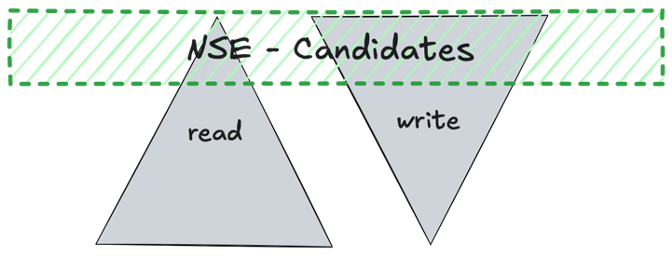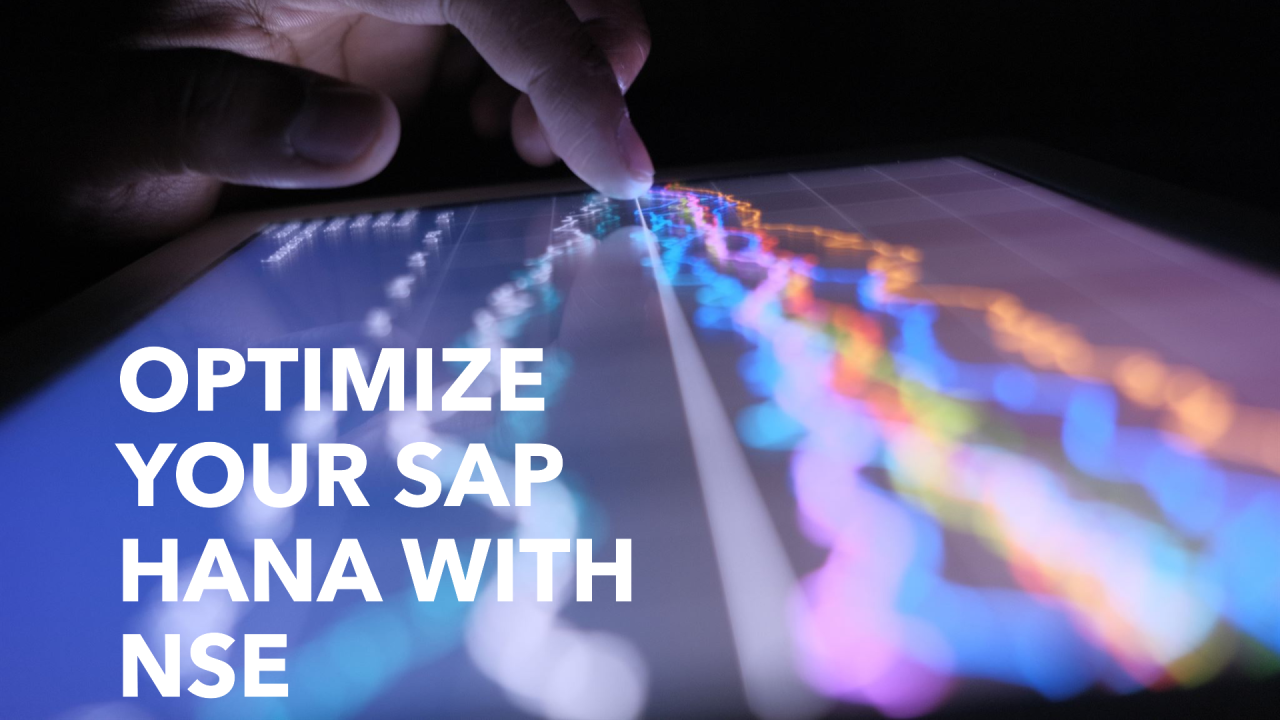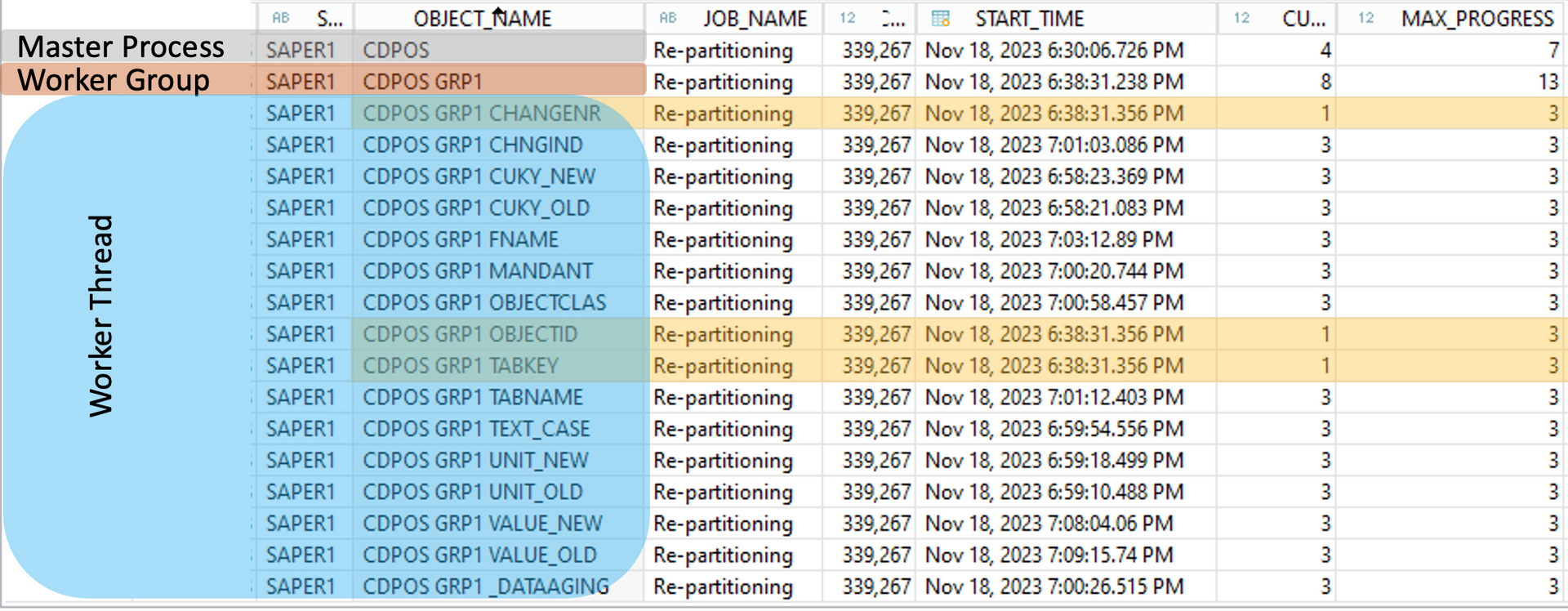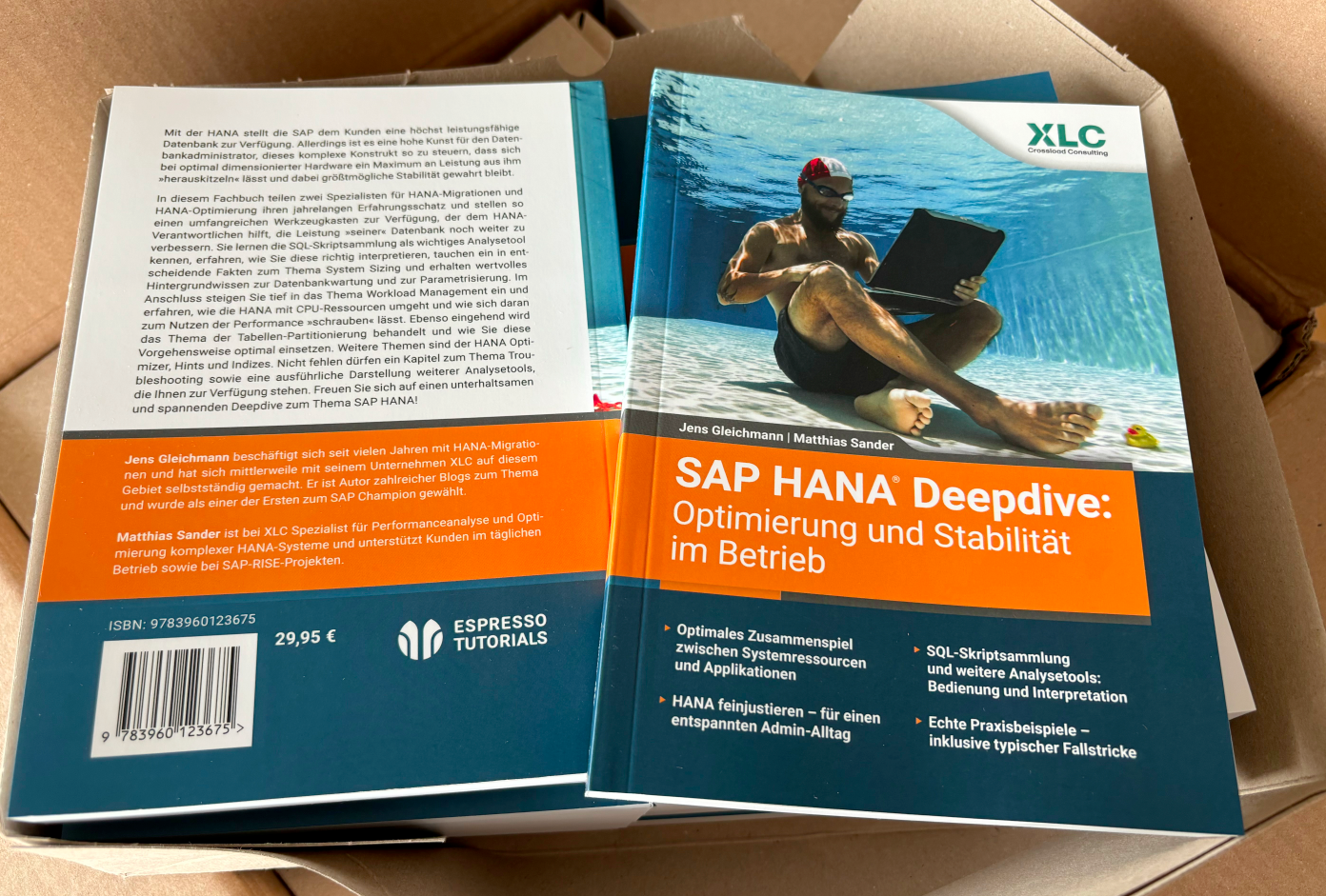HANA News Blog
SAP ERP Extended Maintenance until 2033 - but with conditions
More time to switch from BSoH to S/4HANA

Recently handelsblatt released an article with a new SAP RISE option called SAP ERP, private edition, transition option. This option includes a extended maintenance until the end 2033. This means 3 years more compared to the original on-prem extended maintenance. This statement was confirmed by SAP on request of handelsblatt, but customers receive more details, such as the price, in the first half of the year. This is a quite unusual move of SAP without any official statement on the news page. Just to raise more doubts? Strategy? However a good move against the critics and the ever shorter timeline. Perhaps it is also a consequence of the growing shortage of experts for operating and migrating the large number of systems.
A short summary of the article
- introduction of a new RISE option: "SAP ERP, private edition, transition option"
- old systems (e.g. ECC) can be used until the end of 2033 if the option is part of the RISE contract
- details will be announced soon (in the first half of the year)
- no other change for on-prem customers - end of maintenance is 2027 with extended maintenance to 2030
- a tradeoff: time exchanged for RISE
This raises some questions
- Which OS / DB combinations are supported? It will lead to new lifecycle discussions with other vendors
- Why it is not offered for the on-prem customers due to nearly the same maintenance effort? (the reason is obvious but the answer maybe interesting)
- Can customers who signed the RISE transition option contract directly jump to a possible successor of RISE and S/4HANA?
As SAP provided further details in its fourth quarter results release:
- the new option is only for a very few large customers
- it's not about the extension of on-premise maintenance
- all cloud solutions will run on HANA Cloud?!
The statement regarding HANA Cloud is a little bit misleading and can also be a slip of the tongue. However, all cloud solutions would imply also RISE and GROW. The heart of HANA 2.0 still beats under the hood of RISE and GROW. HANA Cloud is a separate product with its own line of code and its own lifecycle that cannot (yet) be used for S/4HANA.
Here the original transcript from seekingalpha:
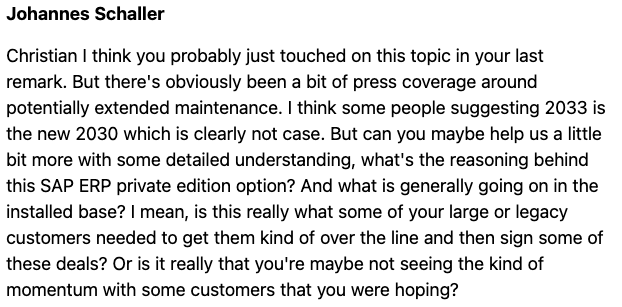
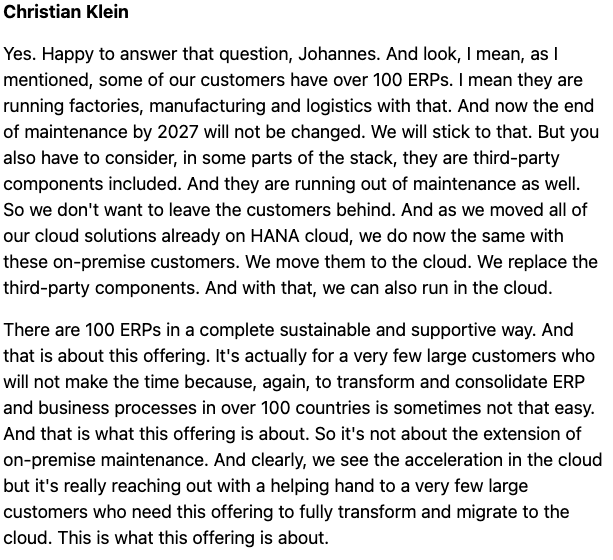
Some assumptions
- Only ERP 6.0 EhP8 will be supported until 2033 to reduce maintenance effort (release and kernel)
- Only HANA systems will be supported until 2033 to raise the HANA revenue
| Product | RTC | EoM | Lifetime |
|---|---|---|---|
| ERP 6.0 | 2006 | 31.12.2025 / 27 / 30 / 33 | 19 / 21 / 24 / 27 years |
| S/4 HANA | 2015 | 31.12.2040 | 25 years |
| Product version | RTC | EoM | Lifetime |
|---|---|---|---|
| ERP 6.0 EhP 0 | 2006 | 31.12.2025 | 19 years |
| ERP 6.0 EhP 6 | 2012 | 31.12.2027 / 2030 | 15 / 18 years |
| S/4 HANA 2023 | 2023 | 31.12.2030 | 7 years |
| S/4 HANA 2025 | 2025 | 31.12.2032 | 7 years |
The single product versions with ERP 6.0 had longer runtimes compared to S/4HANA. In summary the complete product ERP has 19 - 27 years depending on the version and extension option.
Ten years before (2030) S/4HANA will go out of maintenance (2040) they have to release a successor or extend the EoM date of S/4 to 2042 or 2043 to give customer enough time to migrate. Is it like a football or chess game and we see the result only at the end and not in the first half of the game?
SAP HANA News by XLC
